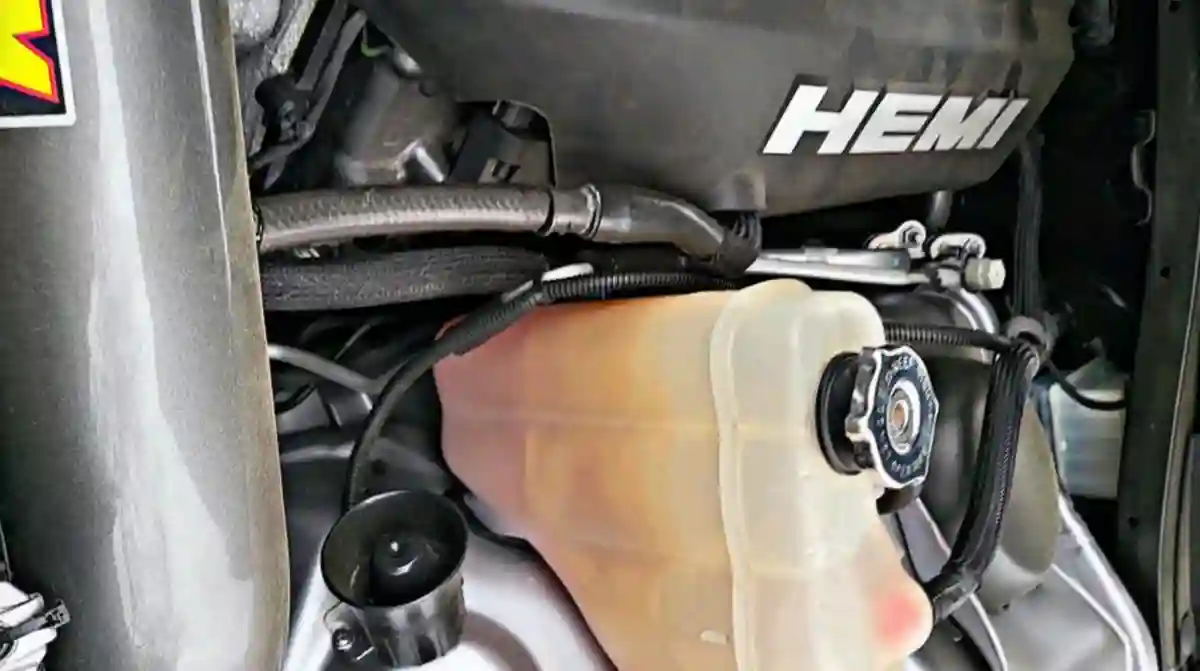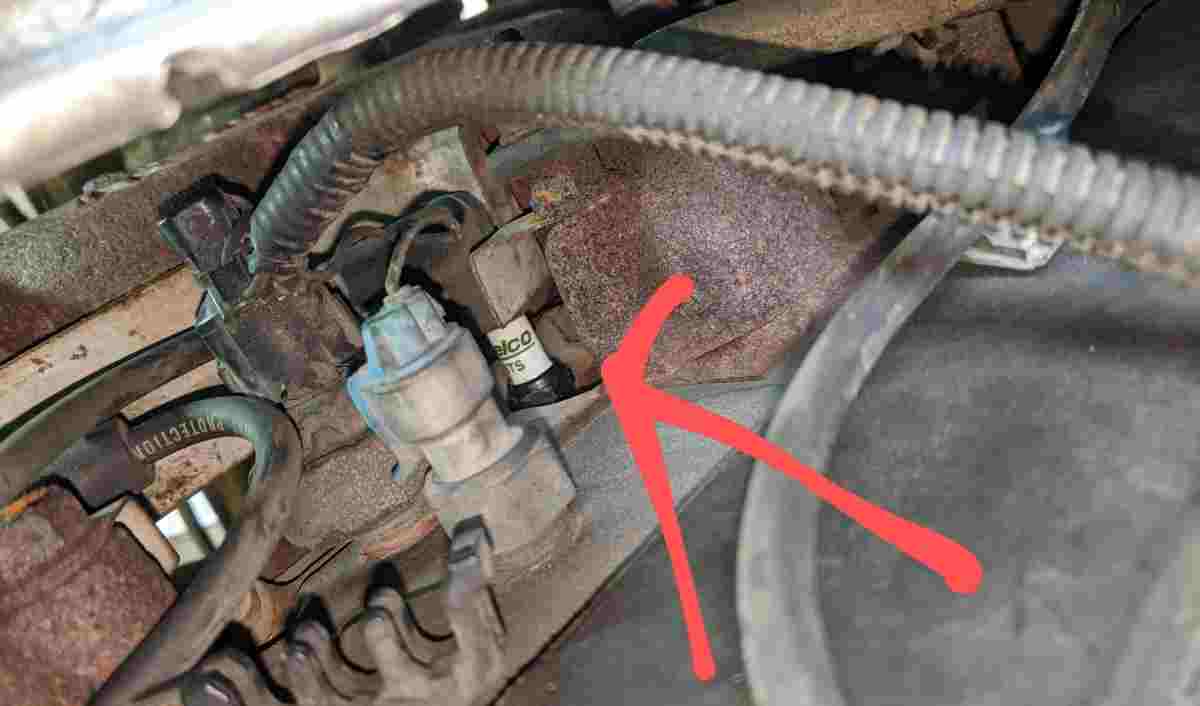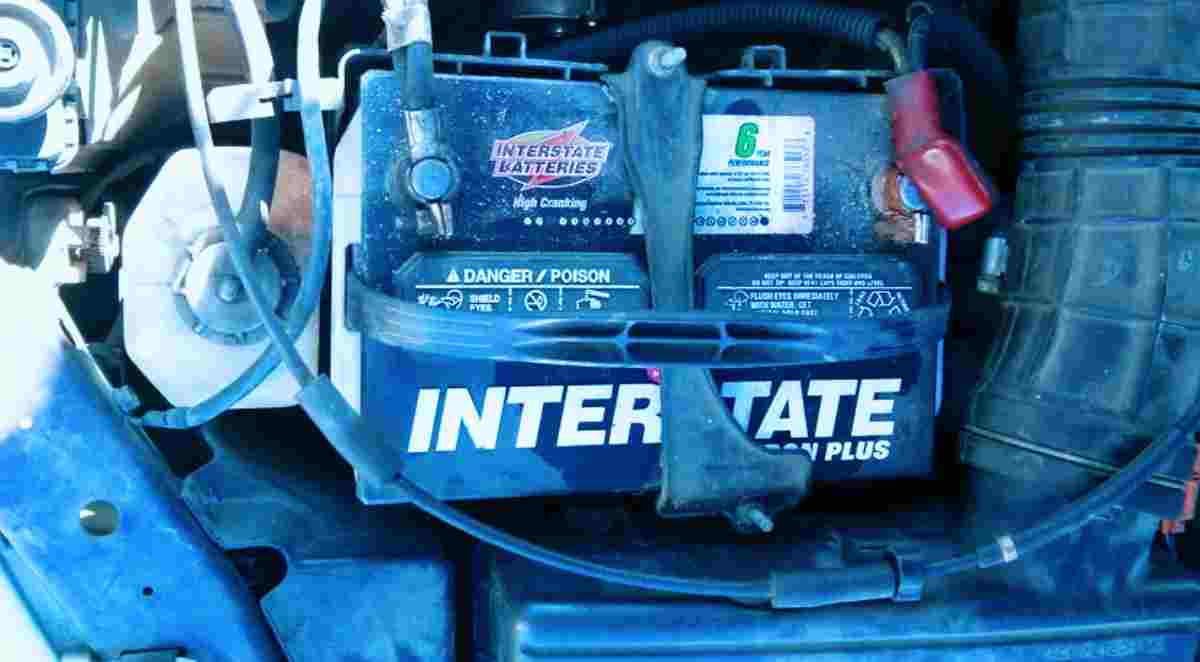Coolant bubbling in overflow tank is a widespread issue experienced by many car owners. This situation, hinting at a potentially serious underlying problem, arises when the coolant in the car’s cooling system begins to overheat and vaporize.
Coolant bubbling in your overflow tank could be a result of serious complications such as a faulty thermostat, a blocked radiator, or even a deteriorated head gasket. Fortunately, this article discusses the potential reasons for car coolant bubbles in the overflow tank and how you can fix them.
Coolant bubbling in overflow tank – causes and fix

There are numerous reasons why there is coolant bubbling in overflow tank, including the following:
1. Leaking or blown head gasket
A frequently observed cause of coolant bubbling in overflow tank is a leaking or blown head gasket. When this component is compromised, combustion gases from the engine can slip into the water jacket and push air into the cooling system through the cylinder head.
To determine if the bubbling is caused by a leaky head gasket, look for bubbles appearing immediately after starting the engine.
How to fix:
The best course of action is to take the car to a professional mechanic to fix the issue. Let us assume you’re looking to save some money, you can try using a leak repair fluid to fix it at home. However, if the leak persists and cannot be sealed, the most effective solution is to replace the head gasket.
2. Faulty thermostat
The car’s thermostat controls the flow of coolant in and out of the radiator. The thermostat should open and close at specific times to allow hot coolant from the engine to escape and cool in the radiator, and then regulate airflow as the engine heats the coolant.
Let’s say the thermostat malfunctions and fails to open and close properly, it can lead to unregulated airflow and cause coolant bubbling in overflow tank.
How to fix:
A faulty thermostat can cause improper coolant flow, resulting in coolant bubbling in the overflow tank. To prevent this issue, it’s recommended to replace the thermostat with an OEM or compatible aftermarket one. As long as the thermostat is functioning properly, the coolant flow will be regulated and there will be no bubbling.
3. Trapped air pockets
Air pockets can be trapped in the cooling system when coolant is flushed and refilled. As the car is driven and the engine heats up, the air pockets expand and are forced into the overflow tank.
Upon cooling, the expanded air pockets contract, and coolant is drawn from the tank to replace the air, resulting in the formation of bubbles. This is a common occurrence, but you can prevent it.
Typical signs of radiator airlock include:
- overheating during normal driving;
- heater not functioning correctly;
- reduced performance; and
- radiator leakage/losing coolant quickly.
How to fix:
When you refill the overflow tank or radiator, air can get trapped in the system. To eliminate these air pockets, it’s important to allow the air to escape. After refilling, run the engine for 15 minutes with the radiator cap removed. This process will help release any trapped air in the radiator or overflow tank before putting the cap back on.
4. Faulty radiator cap
The radiator cap acts as a pressure seal to maintain high pressure within the cooling system, while facilitating the flow of coolant into the overflow tank. Supposing the cap is faulty or replaced with an incompatible one, air can enter the cooling system, causing the overflow tank to bubble.
A simple way to determine if coolant bubbling in overflow tank is caused by a faulty radiator cap is to observe the presence of bubbles after driving for an extended period.
How to fix:
Without the radiator cap securely in place, the pressure within the system can become unstable and potentially harm the radiator or allow air to enter the cooling system. If you need to replace the radiator cap, make sure to use one that is original equipment manufacturer (OEM) approved or recommended by the manufacturer.
Using a radiator cap that is not compatible with your vehicle can also result in air entering the cooling system.
5. Faulty heater control valve or hose
The heater control valve is responsible for maintaining a warm environment in the passenger compartment by directing hot coolant to the heater’s core.
Let’s say the valve is faulty or the hose connection is loose, air will certainly enter the cooling system. Afterward, it automatically makes the coolant bubble in the overflow tank.
How to fix:
Aside from air entering the cooling system, the individuals inside the car will experience discomfort. To address this issue, you should replace the heater valve and make sure the hose is securely tightened. If the hose is damaged, it will also need to be replaced.
6. Leaky coolant tank hose
The hose that connects the radiator to the coolant tank must always be secure and free from leaks.
So, as long as air can seep into the hose, it is also feasible that coolant bubbling in overflow tank will occur in this situation.
How to fix:
To avoid these problems, it’s advisable to replace the hose promptly. Not only does a leaky hose allow air into the cooling system, but it also results in coolant loss and decreased levels, which can cause the engine to overheat.
7. Bad water pump
The water pump plays a crucial role in circulating coolant or antifreeze through the overflow tank, where it cools down and flows to the engine components.
When the water pump is bad, air enters the pump’s intake, causing trapped air to reach the radiator intake or coolant valve.
How to fix:
You should always seal the water pump. However, when the cap is faulty, it prevents the pump from functioning properly by trapping air.
The solution is to replace the cap to ensure that the water pump operates without any air being trapped inside.
8. Rust and Contamination
Like any metal component, the radiator can suffer from rust over time. Furthermore, if a radiator is not flushed regularly and supplied with the proper coolant, it will accumulate impurities such as grime and debris.
These contaminations can obstruct the radiator’s tubes and also disrupt the smooth operation of the thermostat and water pump. Excessive heat causes the coolant bubble in overflow tank and produces the fast bubbles that can be seen in the coolant tank.
How to fix:
Over time, coolant can become contaminated with sludge, grime, and other particles, leading to clogging in the river flow tank.
This can cause other connected components to not function optimally. To prevent this issue, constantly flush the radiator or overflow tank and refill it with fresh coolant.
9. Inadequate coolant supply
An inadequate supply of coolant in the system is another common cause of coolant bubbling, whether due to a leak or insufficient filling of the overflow tank.
Maintaining the correct amount of coolant in the cooling system is crucial, as it helps dissipate heat effectively and prevents the system from exceeding its operating temperature limit.
Therefore, maintaining the proper level of coolant is essential for the smooth functioning of your vehicle’s engine. A shortfall of coolant can result in overheating, elevated operating temperatures, and unexpected bubbling of the coolant.
How to fix:
The solution to insufficient coolant supply is to refill the coolant tank with the correct type and amount of coolant recommended by the vehicle manufacturer. Supposing the issue persists, it is recommended to have the cooling system inspected by a qualified mechanic.
10. Engine overheating
Finally, let’s talk about engine overheating, which is a result of many underlying issues discussed in this article.
When an engine overheats, coolant bubbling is a likely outcome as the engine temperature exceeds the boiling or flash point of the coolant. Engine overheating is not a positive sign for a vehicle, especially if it occurs frequently.
Although engines are built to withstand a certain level of stress, excessive heat exposure over time can cause damage such as warping or melting of the engine block. Therefore, it’s important to address engine overheating as soon as it occurs to prevent further damage to the engine.
How to fix:
To fix an overheating engine, the first step is to identify the cause of the overheating, which can be due to low coolant levels, a faulty radiator, a damaged water pump, or a clogged engine coolant passage.
Once the cause has been determined, the necessary repairs can be made, such as refilling the coolant, repairing or replacing the radiator, water pump, or hoses, or cleaning the engine coolant passages. If the issue persists, it is recommended to have the engine inspected by a qualified mechanic for a more thorough diagnosis and repair.
What you need to understand about coolant bubbling in overflow tank
The overflow tank, also referred to as the coolant recovery tank, is a crucial part of a car’s cooling system that stores any excess coolant. The mixture of water and antifreeze, known as coolant, flows through the engine to keep its temperature under control.
When the engine gets too hot, the pressure within the system increases, causing the coolant to expand. Afterward, the overflow tank stores this surplus or excess coolant to prevent it from overflowing from the radiator.
Cooling bubbling in overflow tank is a warning sign that there is an excessive build-up of pressure in the cooling system. This excess pressure causes the coolant to boil, leading to the formation of bubbles. These bubbles rise to the top of the coolant, creating a frothy and bubbly appearance.
FAQs
Why is my coolant bubbling yet my engine isn’t overheating?
When there’s air trapped in the coolant system, the coolant will bubble but will not overheat. It might also be due to a faulty coolant pressure cap or a little leak in the head gasket that does not cause the engine to overheat.
Can air bubbles in coolant cause overheating?
Certainly! The presence of air bubbles in the coolant can lead to overheating of the engine. This is because air pockets or a faulty head gasket can trap air, preventing the coolant from properly flowing and cooling the engine.
Is a blown head gasket the only reason for coolant bubbling in overflow tank?
Coolant bubbling in overflow tank is a strong indication of a blown head gasket in your car. It’s recommended to take your car to a mechanic for a proper diagnosis, and then explore the available repair options.
Coolant bubbling in overflow tank is a sign of a potential issue in the engine’s cooling system. So, take care of the coolant system and address any issue you come across to ensure a long-lasting and efficient engine.

![Brake Lights Not Working but Third Light is [Fixed] Brake Lights Not Working but Third Light is [Fixed]](https://sanedriver.org/wp-content/uploads/2022/07/PicsArt_07-04-12.18.14.jpg)
